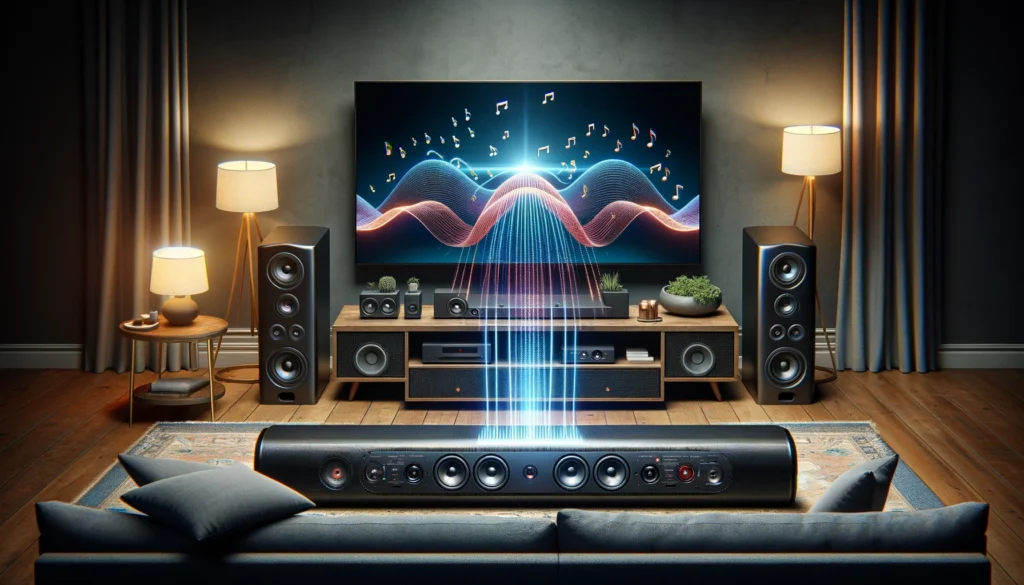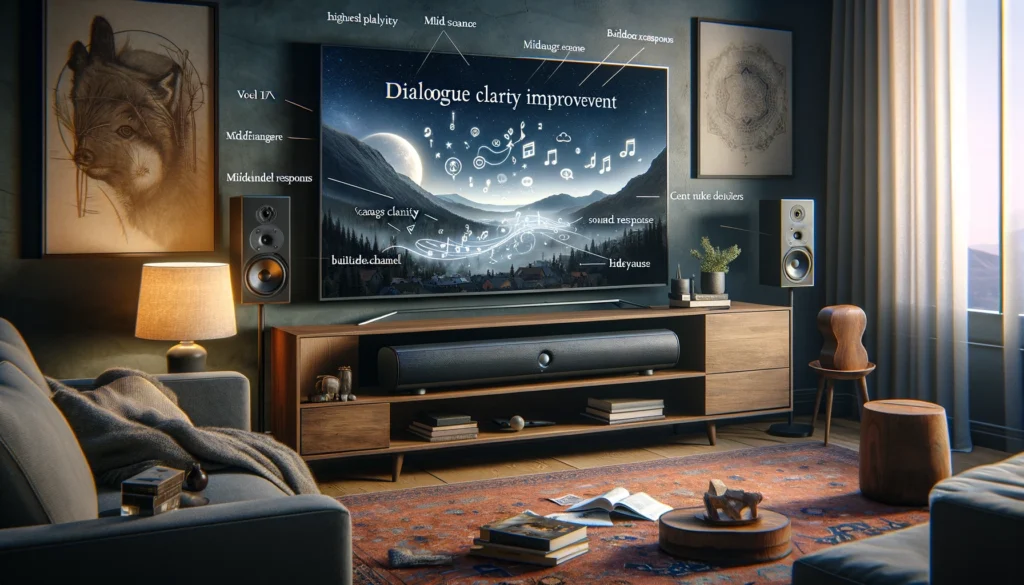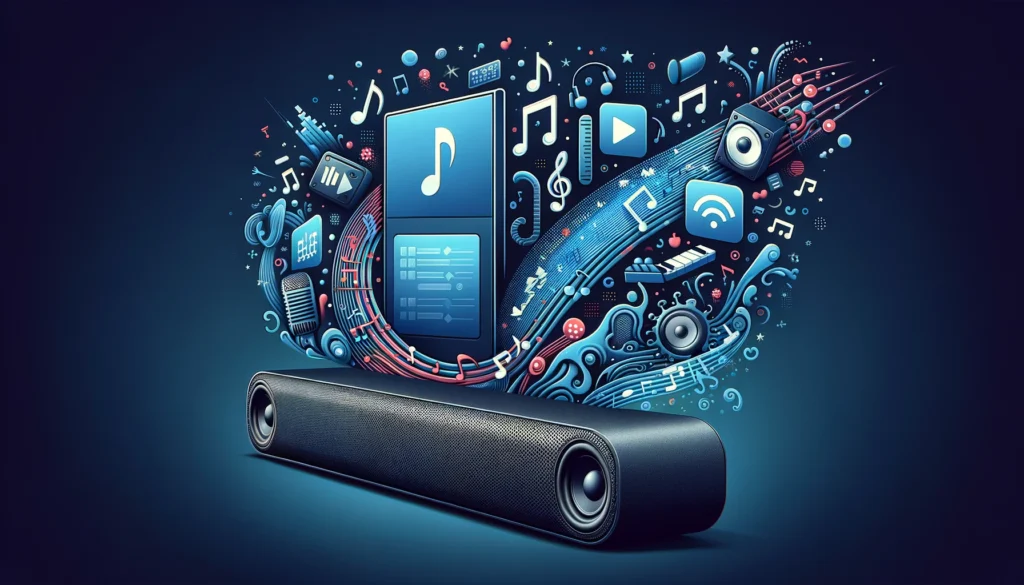The clear, room-filling sound of a surround sound system is tempting.
But are costly soundbars actually worth investing in?
With their convenience and affordable price point, soundbars can add value by boosting audio quality.
However, true audiophiles may still prefer more robust home theater setups.
Let’s dive into the key pros and cons to explore if soundbars provide enough bang for your buck.
Are Soundbars Worth It?

In short – it depends.
For casual listeners wanting improved audio over low-quality TV speakers, soundbars can definitely be worth it.
They provide a simpler, more compact option compared to full-blown surround systems.
However, audiophiles desiring truly immersive, theater-like sound may want to splurge on a more advanced multi-speaker setup.
We’ll analyze the key tradeoffs here so you can decide what works best for your needs and budget.
Audio Quality Improvements

The most compelling reason to invest in a dedicated multidriver soundbar unit to pair with a new flat panel LED/OLED television over relying solely on integrated chassis speakers revolves around appreciable audio quality.
Spanning key aspects like wider frequency response delivering fuller bass and brighter treble, significantly louder volumes before distortion harshness creeps in and superior stereo channel separation creating a deeper, more spacious soundstage.
Since display manufacturers focus engineering efforts overwhelmingly towards visual acuity metrics like brightness, contrast, pixel density and color reproduction at the expense of audio largely treated as a tertiary afterthought.
Soundbars overcome glaring speaker deficiencies resulting from size and power restrictions.
Capable soundbars utilize specialized components like independent premium tweeters, midrange drivers and tailored woofers precisely engineered by acoustic experts to reproduce the full spectrum of audible frequencies.
Cleanly without gaps that plague built-in television designs heavily compromised through extreme dimensional constraints never originally intended for hi-fidelity playback.
Similarly, more powerful amplification and digital signal processing provides volume headroom to allow clearer cinematic and musical playback at louder reference levels television speakers.
Struggle reaching before turning harsh and muddled often requiring subtitles permanency to understand dialogue.
Whether desiring bass lending weight and emotion to action sound effects or revealed intricacies and instrument separation for music absent on TVs, quality soundbars deliver tangible upgrades.
Dialogue Clarity

Another prime advantage compelling consumers towards equipping new televisions with soundbars lies in drastically improved vocal clarity and midrange response absolutely critical towards understanding dialogue.
Driven content without perpetual rewinding and re-listening or leaving subtitles activated by default due to incomprehensible muddy speech reproduction from inferior integrated speakers.
Since many movies and serialized television shows intertwine significant plot details within conversations drowned out through limited chassis driver element separation or revealed only with volume maximization.
That low grade amplification distorts into garbled noise, supplemental soundbars optimize playback.
Some achieve heightened vocal lucidity through customized center channel drivers ensuring anchor sound components don’t spread indistinguishably across left/right channels.
Others employ proprietary tuning mechanics developed to clarify the precise narrow band of human speech irrespective of programming genre or playback volume levels that trip up television-quality drivers.
DSP powered listening modes further enhance dialogue reproduction through equalization choices.
Since actually catching every word proves pivotal towards following intricate narratives, supplemental soundbars fixer miserable speech intelligibility issues that leave viewers perplexed.
By shows and needing to keep subtitles permanently enabled as a crutch to fill gaps.
Immersive Listening

While classic stereo left/right separation gets a noticeable boost from soundbars over built-in television speakers thanks to wider dispersed driver elements and overall improved amplification power.
Leading to increased spaciousness perception and listening enjoyment benefits, premium models aiming to simulate true enveloping surround soundscapes take sonic performance even further with virtualized audio.
Processing that synthesizes highly immersive multichannel effects lacking actual rear channel satellite speakers.
Through technologies leveraging sound calibration tricks psychoacoustically aimed at convincing brains sounds exhibit phantom rear projection or vertical height positional attributes absent real multi-speaker arrays, premium soundbars immerse fantastically.
Utilizing a mixture of equalization, phase timing manipulation, simulated echo profiles that mimic side and rear wall reflections and frequency-based sound modulations directed towards fostering illogical sonic localization.
Perceptions through resonance masking lies at the core of virtualized surround technologies commonplace on numerous Dolby and DTS support soundbars lacking actual 5.1 support.
Modern decoding integrated into advanced soundbar models also allows for genuine reproduction of next generation 3D object-based audio tracks which transfer genuine 5.1 and 7.1 channel separation.
Encoded in streaming and physical media without requiring additional hardware.
While sub-$200 soundbars obviously skip immersive capabilities, premium offerings compete with full separate speaker home theater configurations including ceiling firing drivers to bounce Dolby Atmos and DTS:X signals off surfaces.
Whether needing multichannel processing or spaced out placement flexibility, standalone systems retain fractional sonic advantages at exponentially higher costs and aesthetic consequences.
Stream Music and Podcasts

While certainly some consumers elect upgrading integrated flat panel television speakers with more capable soundbar counterparts predominantly seeking louder, cleaner playback aimed at cinematic content like movies.
Television shows and gaming where drivers built into slim chassis struggle accommodating wide dynamic range action scenes and effects lest dialogue become utterly buried, standalone soundbars also serve music lovers and casual listeners quite well.
Thanks again to independent amplifier sections and specialized drivers including tweeters and midranges tasked with excelling stereo separation over trying to cram full range spectrum coverage.
Through lone conjoined speakers, fidelity and imaging notably improves for album playback or streaming sessions.
Soundbars allow users to route music content directly via HDMI inputs from phones, media players, computers and tablets with sounds reproduced through dedicated drivers and wiring absent other electronic interference.
Models aimed at audiophile buyers place heightened importance on amplifier quality and rigid cabinet construction mitigating unwanted resonance or distortion that colors purity.
While lacking the component separation afforded by luxury receivers and bookshelf speakers, premium soundbars surprise consumers familiar only with flat panel television speakers expecting thin sound.
Wireless streaming over Bluetooth provides added convenience absent cables looking messy in living spaces while still improving on smart TV apps struggling with latency and decoding.
Adding a soundbar caters intrinsically better stereo soundstaging perfect for ambient background music enjoyment purposes where design and subtlety matters.
Seamless TV Integration

A huge secondary advantage compelling potential soundbar customers beyond just craving heightened television and movie audio clarity lies in simplified cabling, streamlined integration and aesthetic cohesion.
With modern front facing display panels thanks to purposefully compact industrial design that tucks discretely underneath or blends beside televisions rather than ostentatious satellite speakers and subwoofers cluttering spaces.
Since consumers buying premium QLED, OLED and LED televisions logically want seamless audiovisual blending into living spaces rather than techy expensive looking equipment battling their sleek screens visually.
Well-designed soundbars naturally fill this role through intentional lifestyle minded traits.
Numerous connectivity options like HDMI ARC, optical or Bluetooth remove cable clutter necessitated by older receivers shuffling multiple boxes with thick wire runs.
Single unit form factors distill better bass, frequency range, volume and stereo imaging into singular enclosures that won’t domineer décor or require rearranging furniture layouts to accommodate new equipment.
Premium soundbars also place special cosmetic design attention towards matching finishes, materials and visual symmetry with partnering televisions brands.
Whether desiring impressive cinematic or musical improvement more subtly integrated into rooms over techy spectacle, soundbars deliver refinement through intentional engineering catering ease of living spaces anchoring around display focal points.
They blend amplification upgrades into environments absent imposing hassles that custom weaves oft trigger.
Cost Effectiveness

Given the appreciable benefits soundbars provide television viewers across improved bass response, louder volumes before distortion, enhanced stereo separation and even simulated surround sound.
Immersion compared to built-in speakers is constrained by extreme dimensional limitations and entry-level amplification components capped by heat and power consumption restrictions.
Another alluring trait makes adoption all the easier: Affordability even on limited budgets.
Consumers find very capable entry-level soundbar and subwoofer combinations often available around $150 while models packing 3D audio start under $300 – quite reasonable in exchange for vastly improved entertainment enjoyment.
Even premium soundbars supporting lossless music playback, Dolby Atmos and DTS:X immersion or dedicated up-firing drivers to synthesize overheard objects and events cap pricing around just $800.
While full multichannel receivers and several separate speakers plus cables challenge $1000+ for setup without even factoring labor or custom installs, single bar encasings surprise through strong performance-per-dollar cost ratios.
Between frequent sales around seasonal electronics peak events and additional audio giveaway promotions when bundled with displays from the same manufacturer, value minded yet audio discerning buyers.
Find soundbar solutions delivering substantial enough upgrades over television deficiencies at accessible costs that skipping seems almost silly.
If desiring significantly better movie, television, gaming and music without breaking budgets, few comparable solutions compete.
Conclusion
While basic soundbars have limitations in audio quality and surround sound capabilities, their convenience and affordability make them a cost-effective upgrade for many.
Yet cinephiles and music lovers with discerning ears may still prefer investing in a true surround sound system.
Weigh your priorities in sound quality versus simplicity to choose the best audio equipment for your lifestyle.
